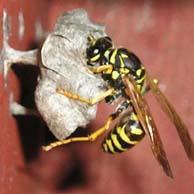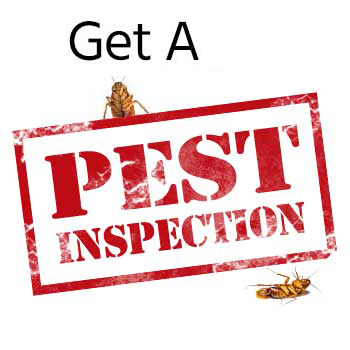How to Get Wasps Under Control

Before you call an exterminator, figure out how it’s possible to get wasps under control. Gutters, soffits, and eaves on house exteriors are popular nesting spots for wasps. Plant life and flowers attract them to lawns, as will patios and additional outside eating spaces with sticky soda spills or crumbs which aren’t cleaned up. Trash cans which aren’t correctly covered and consistently emptied additionally attract wasps which are seeking food sources. Properties that have abundant spiders and insects offer sufficient prey for both mature and developing wasps. Nests that are left behind by wasp populations which expire during the cool weather seasons generally aren’t reused by new generations of wasps.
Wasps: How serious are they?
Wasps close to the house may destroy outside activities and make working in the yard challenging. While they seldom go out of their way to sting humans, wasps might become hostile if disturbed or threatened. A wasp’s sting is painful yet generally non-threatening to the ones without allergies to a wasp’s venom.
How to Eliminate Wasps
An exterminator utilizes an integrated approach which uses various efficient ways to control wasps. Their integrated program should include:
- Inspection – figuring out what’s necessary to offer an efficient plan for wasp control.
- Documentation – that explain the specifics of the general control plan and findings and results of, not just the inspection, yet also follow-up services.
- Education – that explains the habitat, diet, and behavior of wasps and how these details will be useful to a homeowner.
- Cultural controls – adjusting the space around the business or home to decrease the number of sites which are appropriate for wasps to nest.
- Exclusion – which makes it difficult for wasps to get into a structure.
- Sanitation – which keeps the space clean and efficiently reduces accessibility to a wasp’s food sources.
- Choice of the best wasp control techniques – light modification, traps, insecticidal and mechanical controls, physical extraction
- If needed, emergency services
The exterminator…
- Knows where they’re more than likely to construct nests on your home and may offer advice on controlling your wasp population.
- Knows which wasp species are aggressive and which ones are less threatening and more docile. Based on these details, the exterminator may assist you in deciding what ought to be done to relieve your wasp problem.
- Can answer questions and offer recommendations concerning the use of traps or additional methods of wasp control.
- Will give advice on how to manage waste products which are appealing to wasps
- Will own the right products and equipment to control wasps in an effective way without endangering pets or people.
Wasp Infestation Signs
Signs are dependent upon species, yet oftentimes the workers and nests are the most likely indications.
In general, wasps come into our houses as a result of the following situations.
- More than one wasp nest is built either near or inside openings leading inside the home. For instance, a wasp nest may be situated close to a window with a damaged screen or door that’s left ajar to the outside. As wasps occasionally build their nests in attic spaces and wall voids, wasps from these nests might enter the living spaces of our homes. One frequent cause of this occurrence is as a homeowner sees wasps going out of and into a void. A homeowner might seal up that exit and entry before all the wasps in the nest expire. The result might become an entire nest of wasps which can no longer get outside and start chewing through the ceiling or wallboard, which results in confused, angry wasps which now are inside the home.
- Wasps seeking interior, protected spaces in which to overwinter. Most species of wasps have a lifecycle which depends upon fertile queens from the colony discovering a protected site to survive the winter season. The majority of the time the queens pick sites other than inside houses to overwinter. Also, they discover our attics or additional protected sites inside a house to be cozy. As the female wasp settles in, she typically isn’t seen flying around the house. But, until they locate the proper overwintering site, then again in the springtime as they want to get outside and start their new nest, they may be alarming and troublesome.
- Wasps which just happen to get inside like entering through an ajar window or door or become “hitchhikers” accidentally brought inside. Wasps constantly are looking for new food sources for their nest mates. Thereby, it isn’t a surprise that wasps investigate the interior of residences if they readily can get into a house. Additionally, while it doesn’t happen that often, wasps unintentionally can get inside if they “hitch a ride” on virtually anything we may bring inside our house and not see the hitchhiking wasp.
Habits, diet, and behavior
Wasp species are classified as solitary or social. As their name suggests, social wasps reside in colonies, which might number in the thousands. Inside the colonies, female workers do all duties inside the nest. Solitary wasps reside alone and thereby don’t have a colony. They will lay eggs, yet the eggs are left alone to hatch.
Some are predatory, while other wasps are parasitic. Predatory ones kill and eat other insects and other animals that they oftentimes give to their larvae.
Typically, parasitic wasps lay their eggs inside the bodies of living creatures such as spiders or caterpillars. The larvae eat the still-living host. They can help in the management of additional pests, especially in agriculture as a biological control agent. In addition, many wasps consume nectar from flowers and thereby function as a pollinator.
Some are aggressive species and may sting as threatened. Unlike a honey bee, a wasp oftentimes is able to sting several times.
Wasps: Do they all pollinate?

There are several wasp species that are critical pollinators. But, taken as a group, they do pollinate, yet aren’t as efficient at pollinating as bees. It’s mainly because bees possess hairier bodies than wasps; therefore, pollen will probably stick to the bee’s body and become transported from flower to flower.
Reproduction
Late within the summer season, the queen of a few species will generate unfertilized eggs. They’ll develop into males. These males fertilize the wasps which will become the queens of the next year. The fertilized females overwinter inside a sheltered area. In the majority of cases, the remainder of the colony perishes as winter arrives. The following spring the queen starts laying eggs. Fertilized eggs they produce become workers and build the nest and feed the larvae generated by the queen.

